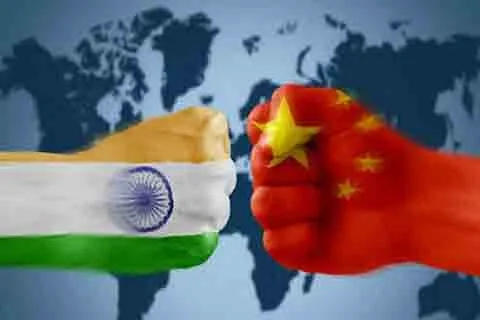The standoff of the Indian and Chinese troops in the Eastern Ladakh has made it to the international headlines. Much of the international opinion did not take sides for the obvious, but there was a dominant view that China was intimidating its neighbours as part of its expansionist designs. The standoff in Himalayas in Ladakh was put in the same category as that of its hostile activities in South China Sea and the way it was making one after another move to assert its regional hegemony in South Asia and South East Asia.
Internationally, there are clear attributions to the moves by Beijing that have annoyed the world. One of them, of course, is the manner in which China maintained secrecy about the outbreak of the novel corona virus in Wuhan. Not only did Beijing and leadership of Chinese President Xi Jinping had hidden the extent of the pandemic within China but also the dangers of the pandemic for the rest of the world. The world is afflicted. There are 130,000 deaths in the United States alone. Beijing’s arrogance in this particular matter has strained its relations with many countries in the Europe to Australia.
There is an urgency for India to resolve the issue at the earliest. Fears have been expressed that a war may erupt between the two Asian giants, as both the countries have amassed their troops on the LAC with war machinery and several columns of convoys are moving up in Himalayas with more troops, machinery and supplies to sustain the troops in the harsh weather conditions where summer is also part of winter at the heights ranging from 14,000 to 18,000 feet. And, it will be in neither China’s nor India’s interest to escalate tensions that may lead to war.
A real-time assessment of the situation at the LAC is not possible. It is known to a highly select group in the army and the political establishment of the country. This is necessary because all the situations cannot be placed in the public domain, because in such scenarios, each word has its own strategic connotation. The words can be interpreted in a number of ways that may prove counterproductive in the given situation.
Four key elements need to be understood. The most important among them is the army. Soldiers from various parts of the country have reached the Himalayan heights, many were already there. They are guarding the frontiers. They are first line of defence and they know their conditions better than anyone else. The soldierly instincts tell them, what is coming. The violent clashes in Galwan Valley on June 15/16 bear testimony to that. India had lost 20 soldiers, including a Commanding Officer. China is quiet about its casualties. It showed that Chinese troops did not go unchallenged. There were deaths and injuries on their side, how many, we don’t know unless Beijing speaks about it. Rest is speculation, and the speculations often prove to be deadly.
The army has done its job on two-fronts. The two-front here is not China and Pakistan , but one, guarding the borders with extreme valour to the extent of making supreme sacrifice. That is the hard and cold reality of the situation. Two, its commanders have held the negotiations with their Chinese counterparts to ease the situation. That the army was given the mandate to hold the talks and work out an ease out plan, that is described as disengagement, de-escalation and the pre-April position of the troops on both the sides. When Indian troops make this call of the pre April position that doesn’t mean that they have intruded into the territory of the other side, instead they want the Chinese to step back to the perceived and mutually agreeable borderline. The army has held three rounds of talks with the Chinese, the results of which are yet to appear on the ground.
Second most important aspect is diplomacy. What exactly is diplomacy – to see behind the self-designed faces of the other side and to place their real intentions on the table and address each one of them one by one. The Indian and Chinese diplomats are also at work. The good thing about this diplomatic engagement is that soft options too are being explored. In today’s globalised world, no side can afford to wreck its prestige and honour, as anything going wrong would be disastrous. China should be more worried about it. Beijing is competing with the United States of America in gaining influence the world over, if it uses its hard power, it stands to lose. India, too, is not India of 1962. These realities are better known to China and the rest of the world that is what is making the world weary of the escalation on Sino-India border.
Third, there is need to tab strategic minds. It is especially relevant for our own country. These strategists who think and work out ways on their own are far more important people than the officially designated strategists. In India, our strategic deficit is because there are very few such minds who can resolve the issues. The non-official strategists work by their thinking, instincts, travel and study of the people. That is their strength. What has been seen in the current situation is that most of the strategic minds are repeating the old theories and advancing the solutions that appear in the western media first.
Fourth, India and China should work on their commonalities, civilisational relationship and the need for both to repair their economies hard hit by the pandemic. That is the best way out , but for that there is need to rise higher than Himalayas in our thinking .






